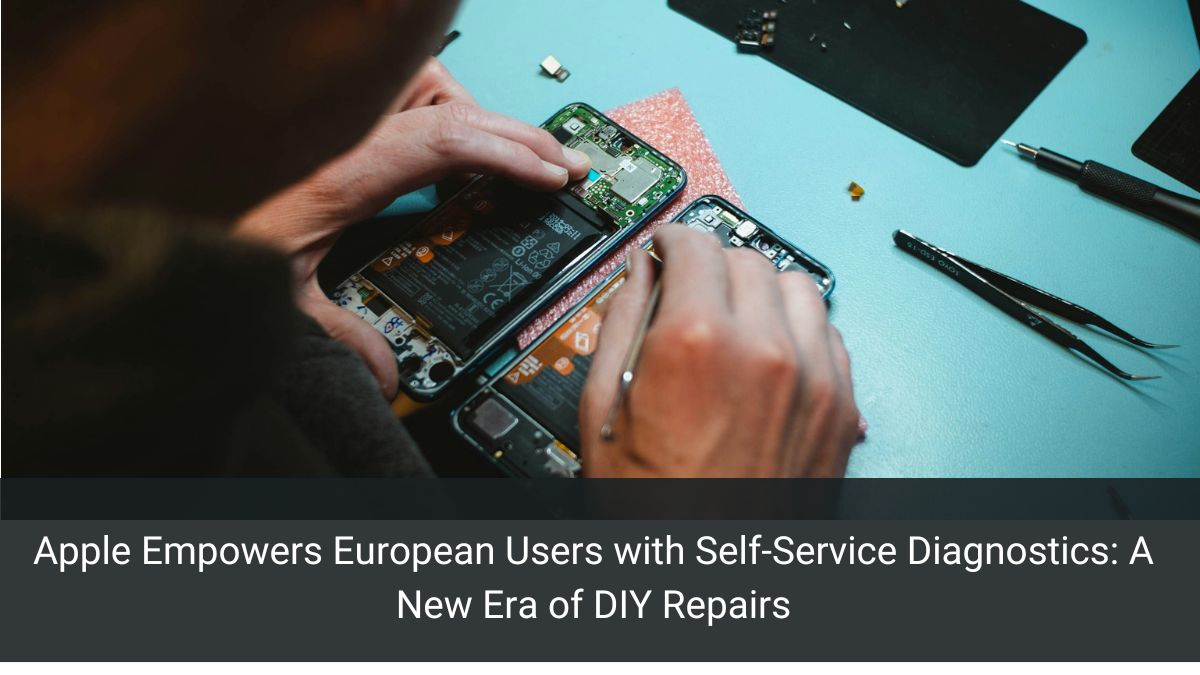Tech
Apple Empowers European Users with Self-Service Diagnostics: A New Era of DIY Repairs

In a world where technology is becoming increasingly complex, Apple has taken a bold step towards empowering its users. The tech giant has recently expanded its Apple Diagnostics for Self Service Repair to 32 European countries, marking a significant shift in its approach to device maintenance and repair.
The Dawn of a New Era in Tech Repair
From Genius Bar to Living Room
Remember the days when a malfunctioning iPhone meant an inevitable trip to the Apple Store? Those times are rapidly changing. Apple’s latest move brings professional-grade diagnostic tools into the homes of millions of Europeans, revolutionizing the way we think about device repair.
As someone who once spent hours in an Apple Store waiting for a simple battery check, I can’t help but feel a mix of excitement and envy. European users now have the power to troubleshoot issues with the same precision as Apple’s own technicians – all from the comfort of their homes.
A Continental Rollout
The expansion covers a vast swath of Europe, including major markets like the UK, France, Germany, and the Netherlands. This rollout follows the successful launch in the United States six months ago, demonstrating Apple’s commitment to this new repair philosophy.
Under the Hood: What Apple Diagnostics Offers
A Technician in Your Pocket
Apple Diagnostics for Self Service Repair is not your average troubleshooting tool. It’s a sophisticated software package that can identify issues with virtually every component of your device. From battery health to radio chip functionality, from camera performance to Face ID systems – this tool leaves no stone unturned.
Broad Device Support
The diagnostic tool’s capabilities are impressive, supporting a total of 42 Apple products. This includes the latest additions to the Apple family, such as the M3 MacBook Air models. Whether you’re nursing an aging iPhone or troubleshooting a brand-new Mac, Apple Diagnostics has you covered.
The Ripple Effects of DIY Diagnostics
Empowering Users and Independent Repair Shops
This move by Apple isn’t just about convenience; it’s about democratizing device repair. By providing the same tools used by Apple Authorized Service Providers and Independent Repair Providers, Apple is leveling the playing field. This could potentially lead to more competitive repair pricing and increased options for consumers.
Environmental Implications
In an age where electronic waste is a growing concern, tools like Apple Diagnostics could play a crucial role in extending device lifespans. By enabling users to accurately identify and potentially repair issues themselves, we might see a reduction in premature device replacements.
The Road Ahead: Challenges and Opportunities
Bridging the Knowledge Gap
While having access to professional diagnostic tools is a significant step, it’s important to remember that using these tools effectively requires a certain level of technical know-how. Apple will need to provide robust educational resources to ensure users can make the most of this new capability without causing unintended damage.
The Canadian Conundrum
Interestingly, while Europe enjoys this new feature, our neighbors to the north are still waiting. Apple has announced that the tool will be available in Canada “next year,” without specifying a date or explaining the delay. This staggered rollout raises questions about the complexities involved in launching such a service across different markets.
A Paradigm Shift in Tech Company-Consumer Relations
From Gatekeepers to Enablers
Apple’s move represents a significant shift in how tech companies view their relationship with consumers. Traditionally, companies like Apple have been protective of their repair processes, often citing concerns about quality control and user safety. This new approach suggests a growing trust in users’ ability to manage their own devices.
The Right to Repair Movement
We can’t discuss this development without acknowledging the influence of the Right to Repair movement. This grassroots campaign has been pushing for legislation that would require companies to make repair information, tools, and parts available to consumers and independent repair shops. Apple’s self-service diagnostics can be seen as a response to this growing pressure.
Looking to the Future
As we embrace this new era of DIY device diagnostics, it’s worth pondering what the future might hold. Could we see similar moves from other tech giants? Will this lead to more modular, easily repairable devices? Only time will tell.
One thing is certain: the relationship between tech companies and consumers is evolving. As users, we’re gaining more control over our devices, but with that comes increased responsibility. It’s up to us to educate ourselves, use these tools wisely, and perhaps rethink our approach to technology consumption.
In conclusion, Apple’s expansion of its Self Service Repair diagnostics to Europe is more than just a new feature – it’s a glimpse into a future where technology is more open, accessible, and sustainable. As we navigate this new landscape, let’s embrace the opportunity to become more informed and empowered users of the devices that play such crucial roles in our lives.
So, European Apple users, are you ready to become your own Genius Bar? The tools are in your hands – it’s time to diagnose, repair, and perhaps gain a deeper appreciation for the complex machines we carry in our pockets every day.
